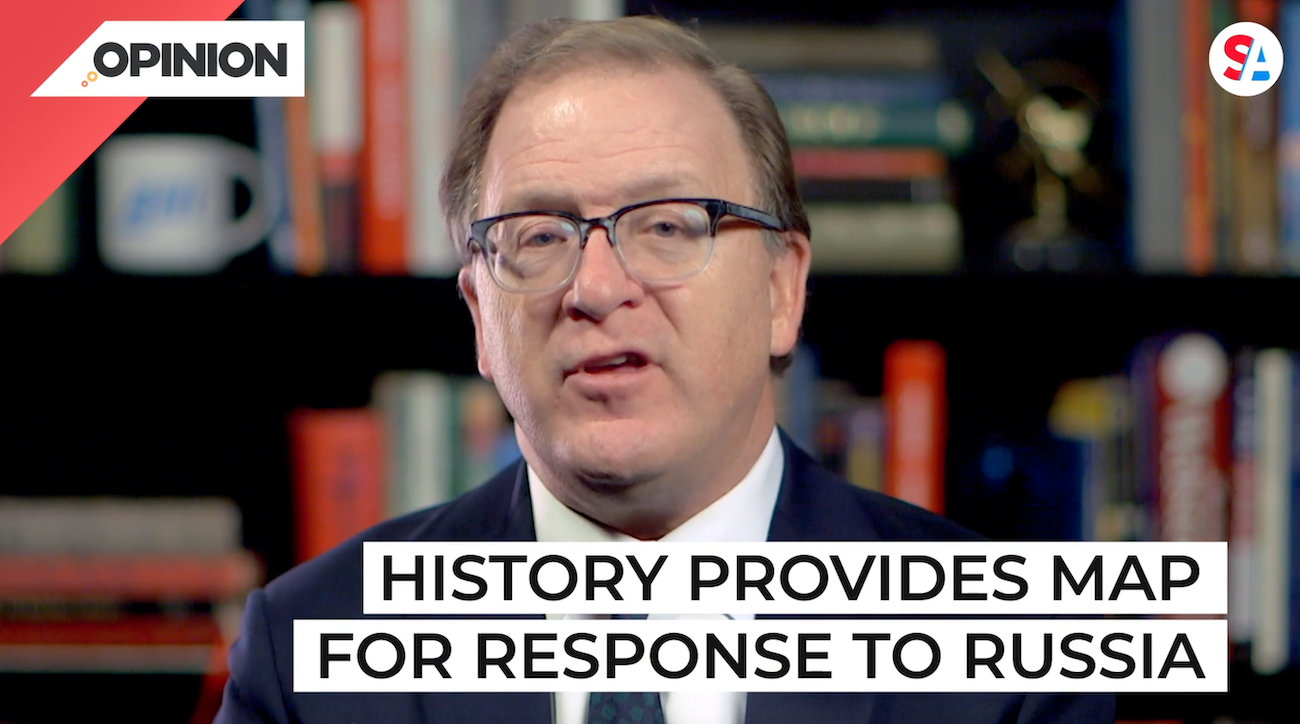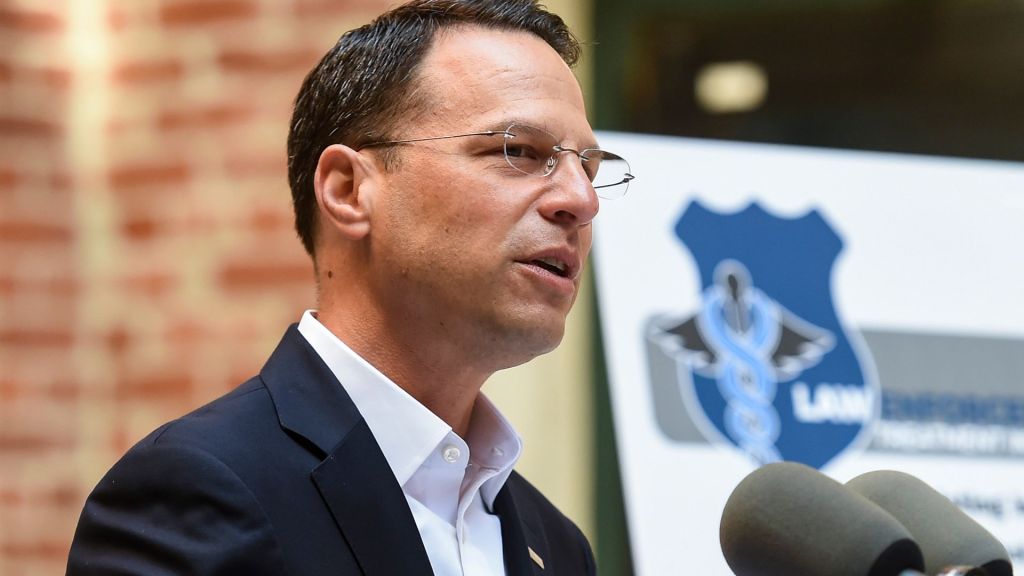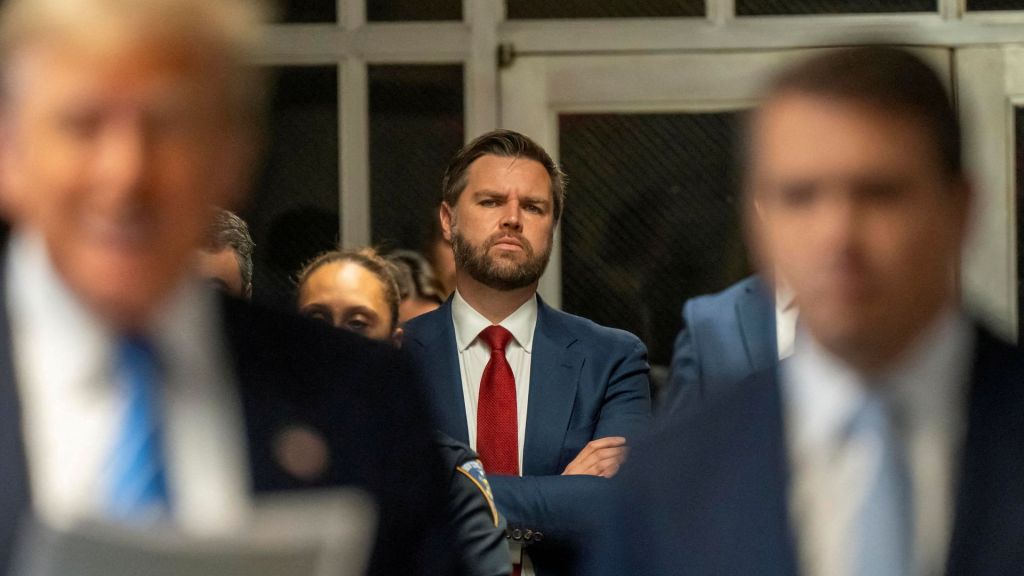
Commentary
-
Our commentary partners will help you reach your own conclusions on complex topics.
Sometimes looking at a map can help us see the course of history. That’s especially true in thinking about what is happening in Ukraine and how the United States should respond to Russian aggression.
So let’s look at a map and remind ourselves of the history of the Cold War — the forty-year contest between freedom and communism that began in 1947 and ended with the fall of the Berlin Wall.
Here’s the map of Central and Eastern Europe today. The distance from Berlin to Moscow is a thousand miles. And between Germany and Russia, there are more than a dozen sovereign states, most of which are democracies, with largely free economies and populations that enjoy essential freedoms.
That wasn’t always the case. In 1955, the map looked like this, and those countries weren’t free. Almost everywhere the Red Army occupied after World War Two, they built puppet police states modeled off the one Stalin had created at home. And several states which exist today – like Ukraine in the south and the Baltic countries in the north – had been annexed outright to the Soviet Union.
Winston Churchill recognized the ruthless expansion of communism for what it was. He saw the Soviet tanks in Warsaw, Prague, Budapest, and Berlin, and he knew they wouldn’t leave on their own. On a visit to the United States in 1946, he raised the alarm with two sentences that became famous:
“From Stettin in the Baltic to Trieste in the Adriatic, an iron curtain has descended across the Continent. Behind that line lie all the capitals of the ancient states of Central and Eastern Europe.”
So let’s go back to the map of Eastern Europe today. And let’s put the line of Churchill’s Iron Curtain on the map.
Behind that line today lie Poland, the Czech Republic, Hungary, Slovakia, Slovenia, Estonia, Lithuania, and Latvia – the list goes on. They’re all free and independent nations. Of the once-communist countries of Europe, only Russia and Belarus remain under dictators. Of course, things aren’t perfect everywhere in the region. But most people are free, increasingly prosperous, and share a love of their independence.
How did that happen? Not all at once, that’s for sure.
That’s what the historian Hal Brands argues in his new book, The Twilight Struggle. Brands writes that the victory of freedom over communism was achieved through countless actions and decisions, incremental adjustments to our strategy across multiple presidential administrations. Not every policy choice was correct, and we faced significant setbacks. At times, the spread of communism in Asia, Africa, and Latin America seemed like it would overtake freedom.
Despite these reversals, American leaders always focused on the underlying strength of freedom over totalitarianism. Step-by-step, they worked to counter what President Reagan so rightly called, “the aggressive impulses of an evil empire.” Brands tells the story of how successive presidents, statesmen, and scholars stood up for our nation’s values, built an international coalition, and made a case for freedom worldwide.
That appraisal might not sound familiar. We often hear that America’s actions in the Cold War were a string of bumbling errors, bad behavior, and even atrocities. But history tells us that narrative is wrong. Our victory in the Cold War wasn’t an accident. It was a real triumph achieved through persistence over four decades.
But how can we apply these lessons to the challenges we face today?
First, we must have confidence in our values. We have to stand up for what we believe. We can’t let freedom or self-determination vanish from our vocabulary. And we can’t ignore the cries for freedom that still echo from the oppressed corners of the Earth. John F. Kennedy, Jimmy Carter, and Ronald Reagan all understood the moral dimension of this struggle. When they spoke about it, they inspired Americans – and millions more living under regimes that suppressed both their rights and their souls.
As we stand up for our beliefs, we will have to marshal our allies. America’s Cold War strategists realized early on that the struggle against totalitarianism could not be won if we did not assemble a global alliance for freedom. The Marshall Plan forged the transatlantic alliance and built a path out of darkness and isolation for many of our wartime friends and foes. Together, we formed a world order freer, more prosperous, and more inviting than communism’s global gulag.
But if we are to succeed in a worldwide effort again, we will have to use our resources wisely. This is a lesson our Cold War-era leaders learned the hard way. Waging a land war in Southeast Asia was not a wise use of our resources. The Vietnam War weakened both our military and our economy. And its immeasurable price in human lives destroyed our unity. But we recovered. And our government discovered new ways to promote freedom – setting the stage for Solidarity’s success in Poland and the Soviet defeat in Afghanistan.
Knowing our limitations also means knowing where we can’t compromise. Situations will still arise where we will have to back up our values with hard power. During the Cold War, both immediate threats, like the deployment of Soviet missiles to Cuba, and overseas acts of aggression, like the Soviet invasion of Afghanistan, required forceful yet prudent responses. This is still true today. As Brands writes, “There is no path to success that doesn’t involve making China and Russia pay exorbitantly for aggressive policies.”
But history also tells us that we have to know when to negotiate. Presidents Nixon and Reagan both used clear, reciprocal agreements to reduce the possibility of nuclear or conventional war. Backing a nuclear superpower into a corner is a recipe for total disaster. Sometimes you have to give the enemy an out because they are sure to need it. And our goal isn’t to cause a violent confrontation. It’s to persuade the leaders of the unfree world that freedom is a better alternative to totalitarianism.
But where does that leave us today?
I can’t claim to know the best course of action in Ukraine. But I do know that whatever happens this week or next, or even this year or this decade, will not be the end. America’s efforts to oppose totalitarianism will continue. But if we remember the lessons of the past, we can win the twilight struggle of our time. Just look at the map of Eastern Europe.
-
Affirmative action ruling consistent with struggle against US racist past
When the Supreme Court struck down affirmative action programs at the University of North Carolina and Harvard, conservatives celebrated the decision, hailing it as a victory for a “colorblind” interpretation of the Constitution. Former President Donald Trump praised the ruling as a “great day for America.” Democrats, on the other hand, criticized the decision, arguing…
-
End of pandemic SNAP benefits a chance to improve food program
Millions of struggling American families in 32 states are now receiving less federal aid to buy food as the emergency funding for the SNAP food stamps program has expired. The emergency allotment, spurred by the COVID-19 outbreak, boosted the money that recipients received by at least $95 per month from SNAP, which stands for “supplemental…
-
Census data paints an inaccurate picture of inequality in America
The U.S. Census Bureau is a nonpartisan government agency, responsible for not only determining how many representatives each state will have in Congress for the next 10 years, but also for collecting income data. By asking about income, the Bureau’s intent is to “help communities enroll eligible families in programs designed to assist them.” But…
-
Elites have lost the trust and confidence of Americans
The Cambridge Dictionary defines the liberal elite as “a group of people with education, money, and other advantages, often living in cities, who have liberal political views and are seen as not understanding the problems and views of ordinary people.” Former President Donald Trump’s war on elites was central to his 2016 campaign and could be weaponized again should he run in 2024. Straight Arrow News…
-
American men need to start taking more personal responsibility
Some members of the Republican party, such as former President Donald Trump and Sen. Josh Hawley (R-MO), blame Democrats for starting a war against American men. These voices want government action taken to protect men from policies meant to undermine their roles in society. But is government intervention really the answer? Straight Arrow News contributor Robert…
Latest Opinions
-
 U.S. Department of Defense
U.S. Department of Defense
Congress still trying to figure out how to reduce wasteful military spending
-
 DVIDS
DVIDS
US Navy, Air Force making waves with new weapons at RIMPAC
-
 Getty Images
Getty Images
Israeli PM Netanyahu meets with Trump at Mar-a-Lago
-
 Getty Images
Getty Images
Growing US nuclear power resurgence reaches the nation’s heartland
-
 Getty Images
Getty Images
Beer from the sun, other solar thermal projects get government funding
Popular Opinions
-
In addition to the facts, we believe it’s vital to hear perspectives from all sides of the political spectrum.


